Introduction to Food Presentation
Food presentation is a critical aspect of the culinary arts that goes beyond mere preparation and cooking. It involves the arrangement and visual appeal of food on the plate, an art that significantly influences the overall dining experience. The importance of food presentation cannot be overstated, as it allows chefs and home cooks alike to express creativity, showcase seasonal ingredients, and create a memorable impression on diners.
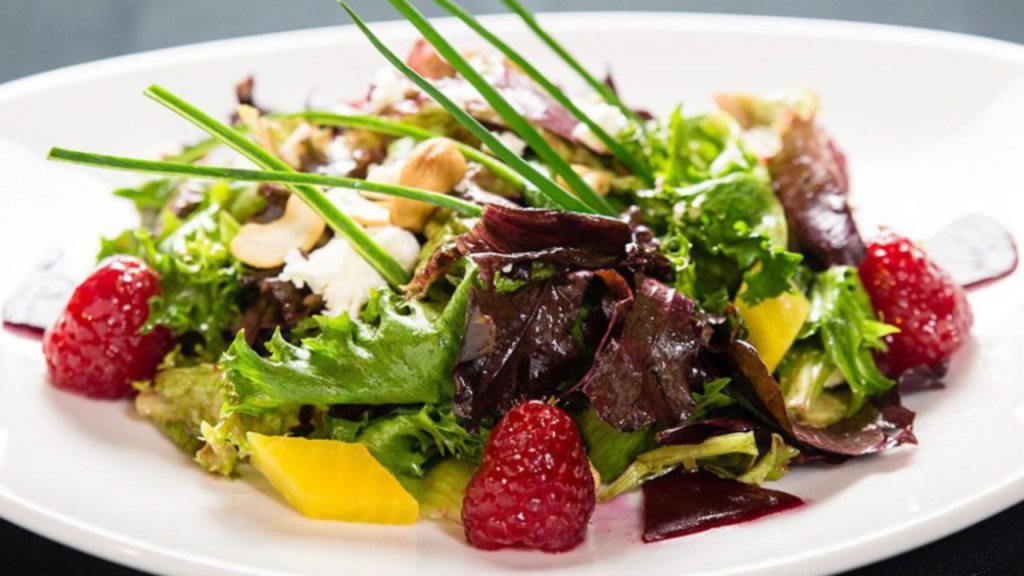
The visual appeal of a dish can profoundly impact perceptions of flavor, texture, and freshness. When food is presented beautifully, it engages the senses, making the dining experience more enjoyable and inviting. Diners often associate well-presented meals with higher quality and taste, which can enhance their overall satisfaction. Consequently, the aesthetics of a dish can influence not only the immediate enjoyment but also the desire to revisit specific restaurants or cuisines. Therefore, mastering the principles of food presentation can be a powerful tool for anyone looking to elevate their culinary skills.
Several basic principles guide effective food presentation. These include color contrast, height, texture, and plate choice. Incorporating a variety of colors not only makes the dish more appealing but also can indicate nutritional balance. Height adds dimension and intrigue, making the food appear more sophisticated and worth savoring. Textural contrasts serve to entice the palate, while the selection of the plate can complement the dish’s characteristics. By mastering these principles, chefs can transform even the most simple dishes into culinary art, creating an atmosphere that enhances flavor and encourages appreciation for the culinary craft.
The Psychology of Food Presentation
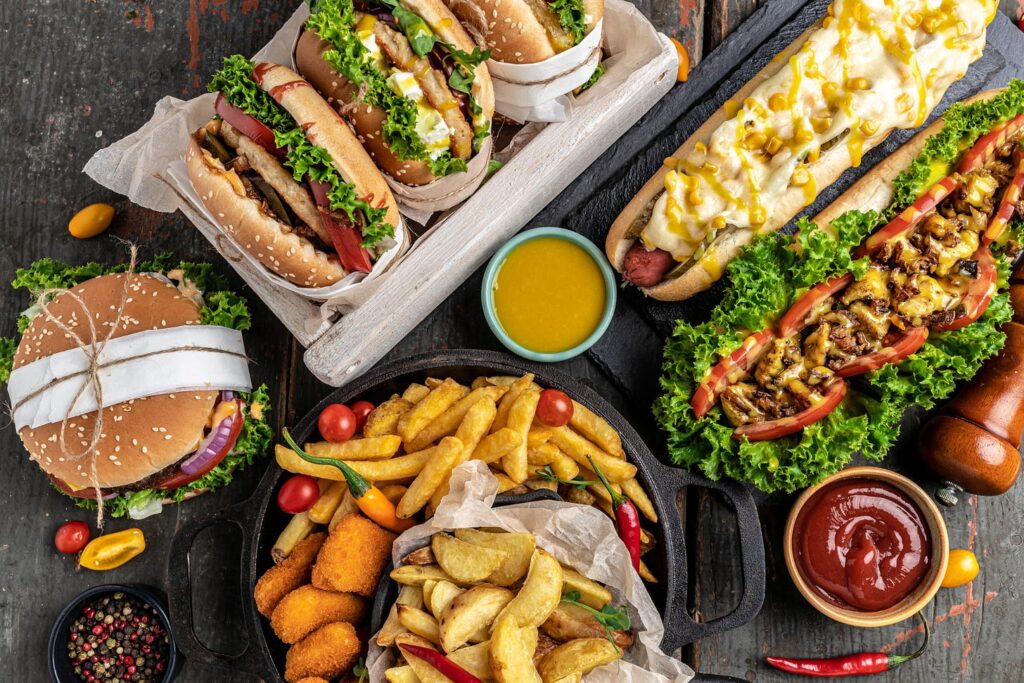
The presentation of food plays a pivotal role in shaping our dining experience, influencing expectations, enjoyment, and overall satisfaction. Research has shown that visual aesthetics can significantly impact how we perceive taste and flavor. The arrangement of food on a plate, the choice of colors, and the techniques employed in presentation can trigger a variety of psychological responses, affecting our sensory experiences even before tasting the meal.
Color theory suggests that the colors of the ingredients on the plate can evoke emotional responses. For instance, vibrant colors like red and yellow may stimulate appetite, while cooler tones such as greens and blues might promote freshness and health. Certain combinations can create a more memorable visual experience, enhancing anticipation and setting the stage for the flavors to come. Furthermore, studies indicate that individuals tend to rate the taste of food higher when it is visually appealing, regardless of its actual flavor profile. This phenomenon illustrates the significant correlation between visual stimulus and perceived taste—a factor that chefs and food enthusiasts alike must consider.
Arrangement techniques are equally vital in the psychology of food presentation. A well-composed dish can provide a sense of balance and harmony, guiding diners’ focus and enhancing their overall experience. Employing heights, layers, and negative space can create visual intrigue, drawing attention to key elements of the dish. The use of garnishes and sauces not only adds aesthetic value but can also amplify sensory perceptions associated with taste. When each component is thoughtfully placed, diners are more likely to engage with the meal, enhancing both their enjoyment and the overall dining atmosphere.
Ultimately, mastering the art of food presentation extends beyond mere appearance; it harnesses the psychological dimensions of our dining experience, fostering deeper connections between flavor, visual delight, and emotional satisfaction.
Essential Elements of Food Presentation
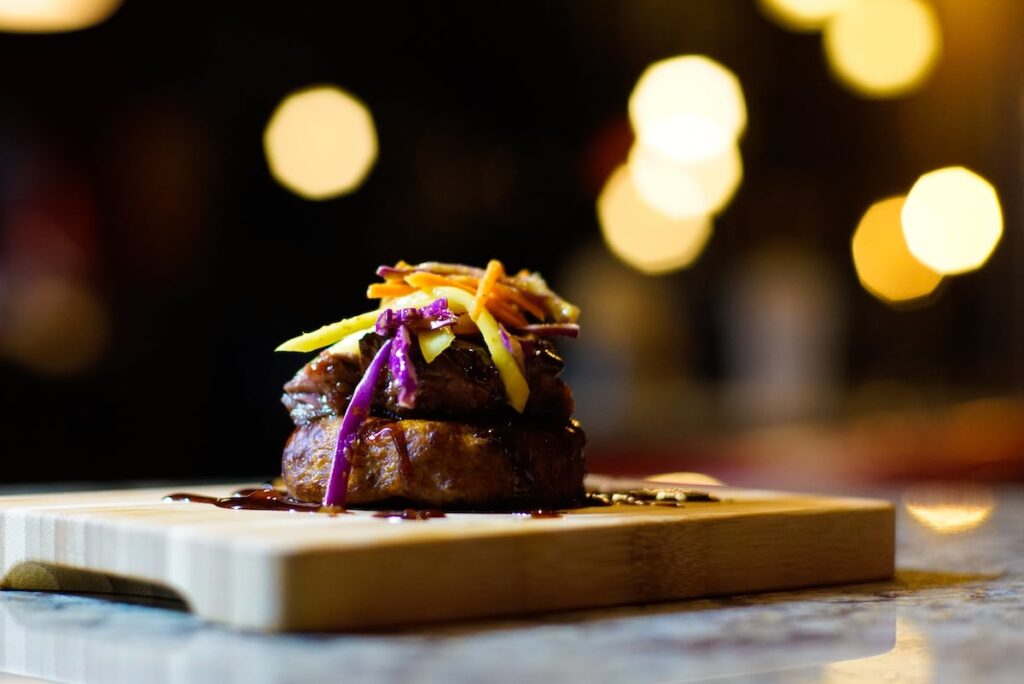
Effective food presentation is a multi-faceted art that combines various elements to create an appealing final dish. One of the primary components of successful food presentation is the choice of plate. The plate serves not only as a serving vessel but also acts as a canvas upon which the food is displayed. Selecting a plate that complements the color and style of the dish can significantly enhance the visual impact. For instance, a vibrant salad may stand out beautifully against a neutral-colored plate, whereas a monochromatic dish might benefit from a contrasting background to add depth.
Color contrast plays a crucial role in engaging the diner’s senses. A well-presented plate should include a diverse palette, highlighting natural colors of the ingredients. Combining contrasting hues, such as vibrant greens with rich reds or deep yellows with earthy browns, can create a visually striking dish. This strategic use of color not only enhances aesthetic appeal but can also evoke emotions and stimulate appetite.
Portion sizes are another critical factor in food presentation. Overly large portions can overwhelm the plate and detract from the beauty of the dish, while excessively small servings may leave a sense of dissatisfaction. Striking a balance between adequate portion sizes and aesthetic appeal is essential to making the dish enticing. Emphasizing height and layering can effectively utilize space while creating an impressive appearance.
Garnishing is a fundamental finishing touch that should not be overlooked in the realm of food presentation. The right garnish can significantly elevate the overall look of a dish, adding texture, color, and a hint of flavor. Whether it’s a sprinkle of fresh herbs, a drizzle of sauce, or a decorative edible flower, garnishes should enhance, not overpower, the main elements of the dish.
Incorporating these essential elements of food presentation—selecting the appropriate plate, utilizing color contrast, managing portion sizes, and skillfully garnishing—not only improves the visual appeal of a dish but also enriches the dining experience, making it memorable for those who partake in it.
Techniques for Plating Like a Pro
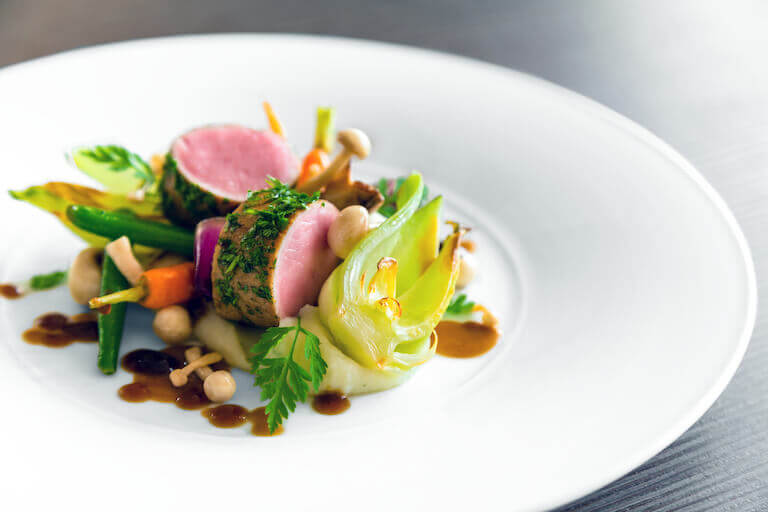
Professional chefs employ a variety of techniques to transform even the simplest dishes into visually appealing works of art. Mastering the art of food presentation requires both creativity and a solid understanding of several fundamental plating techniques. Among these are layering, stacking, and drizzling, each integral in creating balance and allure on the plate.
Layering involves strategically placing ingredients on top of one another to create depth and intrigue. This technique not only adds visual interest but also permits the combination of textures and flavors in a single bite. For instance, a layered dish might consist of a creamy puree at the base, followed by tender proteins or vegetables, and topped with a light, contrasting garnish. It is essential to consider the colors and textures of each layer to maintain an appetizing aesthetic. Additionally, utilizing rings or molds can help in achieving perfectly uniform layers that captivate the eye.
Stacking is another technique that draws the diner’s attention and heightens the sense of anticipation. By vertiginously arranging components, chefs can create an exciting focal point on the plate. It is important to balance the stack to ensure stability. For instance, when stacking items like grilled vegetables or meat, a stable base such as a small dollop of pureed grits can help maintain the dish’s structure while providing visual appeal. Furthermore, layering flavors and temperatures through stacking can enhance the overall dining experience.
Drizzling sauces or purees artfully around the plate not only adds vibrancy, but can also direct the diner’s gaze towards the main component. A controlled squeeze bottle or a spoon can assist in creating elegant patterns without overpowering the dish. Overall, food presentation should enhance rather than overshadow the integrity of the ingredients, so careful consideration must be given to how these techniques can best showcase the flavors of the dish.
Cultural Influences on Food Presentation
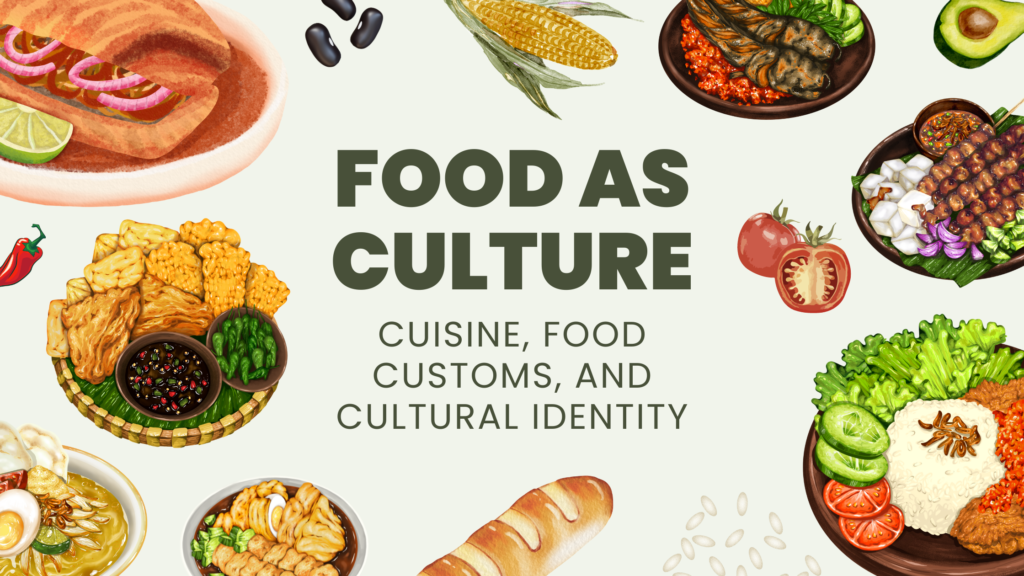
Food presentation is a vital aspect of culinary art, and it varies widely across cultures, each reflecting its unique history, values, and aesthetics. Understanding these cultural influences enhances not only our appreciation for the dish itself but also our understanding of the heritage that shapes it. For instance, Japanese cuisine is renowned for its emphasis on simplicity and natural beauty. Dishes like sushi are presented in a way that highlights the colors, textures, and freshness of the ingredients. The tradition of using lacquered bento boxes enhances the sensory experience, as every meal becomes a carefully curated art form.
In contrast, the vibrant and bold presentations found in Mexican cuisine celebrate the country’s indigenous roots and unrestrained use of color. Plates are often adorned with an array of garnishes, such as fresh herbs, edible flowers, and vivid salsas that contribute to an exuberant visual appeal. The incorporation of traditional serving ware, such as clay pots and colorful pottery, further connects the presentation to cultural significance.
Moving to the Mediterranean, we find that Greek food presentation embodies rustic charm. Dishes are often served family-style on large platters, evoking a sense of community and hospitality. This communal approach encourages diners to share, making the presentation intimate and visually appealing. Fresh herbs, olive oil drizzles, and vibrant salads showcase the region’s emphasis on fresh, seasonal ingredients.
Moreover, the meticulous plating techniques of classic French cuisine underscore the importance of precision and artistry in food presentation. From the delicate arrangement of components to the use of sauces for artistic flair, each dish becomes a canvas of culinary creativity. These cultural approaches to food aesthetics reinforce the idea that food presentation is not merely an afterthought; it is an integral part of the dining experience, enhancing the overall enjoyment of the meal.
Using Color and Texture in Presentation

The presentation of food is an art form that goes beyond mere aesthetics; it engages the senses and sets the stage for the dining experience. An important aspect of this art is the thoughtful use of color and texture, both of which play a vital role in how dishes are perceived. Incorporating a variety of colors not only enhances visual appeal but also signifies the diversity of flavors and ingredients present in a dish. Bright, vivid colors can evoke feelings of freshness and vitality, while muted tones may convey warmth and comfort.
When utilizing color in food presentation, one must consider the color wheel and the effect of complementary colors. For instance, pairing bright greens with warm reds and oranges can create an eye-catching contrast that draws the diner’s attention. Furthermore, culinary professionals often utilize the principle of balance, ensuring that no single color overpowers the presentation. The strategic placement of colorful garnishes or sauce drizzles can enhance the overall visual experience without overwhelming the main components.
Texture also plays a crucial role in food presentation. Different textures engage the senses in unique ways, providing contrast and interest. A dish that combines crispy elements with smooth components creates a delightful sensory experience, as the interplay between textures can elevate a meal. For instance, a creamy risotto with a crunchy herb topping not only contrasts visually but also offers a satisfying mouthfeel. Additionally, layering textures can create depth in the presentation, inviting diners to explore each element with their forks or spoons.
Ultimately, the combination of color and texture in food presentation can turn a simple meal into an appealing masterpiece. By thoughtfully integrating these elements, chefs can craft dishes that are not only delicious but also visually captivating, enhancing the overall dining experience.
Essential Tools and Accessories for Food Presentation
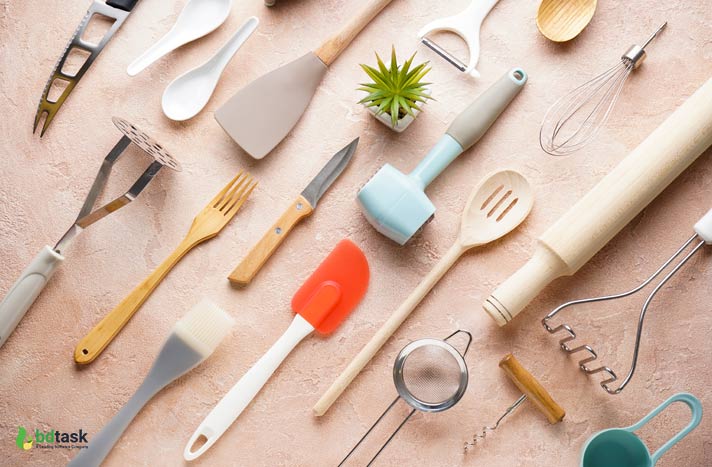
Achieving a stunning food presentation involves not only creativity but also the right set of tools and accessories. Having specific utensils can significantly elevate the aesthetic quality of a dish. One of the fundamental items for any culinary artist is a set of plating tools. These may include tweezers for delicate ingredients, offset spatulas for spreading sauces evenly, and spoons for drizzling and layering components.
Moreover, molds are essential for shaping components, particularly in dishes where structure is crucial. Using molds allows for consistent sizing and creativity in shaping items such as rice, mousses, or even desserts. These tools come in various shapes and sizes, enhancing the visual appeal of the plated dish.
Another area to consider is the use of decorative garnishing utensils. Items such as ring molds, squeeze bottles, and paring knives enable chefs to create intricate patterns and designs on the plate. A squeeze bottle, for example, is invaluable for artistic sauce applications. It provides precision and control, which are essential for replicating professional-looking plates. Additionally, using a microplane grater can add texture by allowing delicate accents, such as zest or cheese shavings, to gracefully adorn a dish.
Glass containers and serving dishes also play a pivotal role in food presentation. Clear glass bowls or dishes allow one to showcase colorful layers, while specialty platters can define the style of the meal. Investing in high-quality, visually appealing dinnerware can also enhance the perception of the food itself.
Incorporating these tools into your kitchen repertoire will not only support your creativity but also streamline the presentation process, allowing you to focus on the artistic aspects of your culinary creations. Whether you are an aspiring chef or simply someone passionate about food aesthetics, the right tools can make a substantial difference in your plating endeavors.
Common Mistakes to Avoid in Food Presentation

In the realm of culinary arts, presentation plays a pivotal role in the overall dining experience. Both amateur and professional chefs often stumble upon common pitfalls that can detract from the visual appeal and impact of a dish. One frequent mistake is overcrowding the plate, which can overwhelm the diner and distract from the main elements of the dish. Plates should be designed with balance in mind, allowing each component to stand out while contributing to the overall aesthetic. Leaving negative space on the plate can highlight the food and elevate its presentation.
Another critical aspect to consider is color combination. Poor choices in colors can clash visually, detracting from the potential appeal of the food. A dish that incorporates a harmonious palette of colors will not only look more appetizing but will also evoke a sense of creativity. Utilizing complementary colors, such as greens with reds or yellows with purples, can enhance the vibrancy of the presentation and stimulate the diner’s appetite.
Texture is equally significant in food presentation, yet often neglected. Utilizing different textures—such as crunchy, creamy, and coarse—can create a multi-sensory experience that adds depth to the dish. A flat presentation can appear uninspired, whereas a thoughtful arrangement that considers height, dimension, and variety in surface properties can captivate attention.
Finally, attention to detail is paramount. Small elements such as garnishes, sauces, and the cleanliness of the plate can effectively transform a good dish into an impressive one. Ensuring that the plate is free from drips or smudges can enhance the overall professionalism of the meal. By being aware of these common mistakes and implementing strategies to avoid them, chefs can significantly improve their food presentation skills, making their dishes not only a treat to the palate but also a feast for the eyes.
Conclusion: Elevating Your Culinary Creations

In this exploration of food presentation, we have delved into the various techniques and strategies that can significantly enhance the aesthetic appeal of your culinary creations. The art of food presentation is not merely about making a dish look appealing; it is an integral part of the dining experience that can influence perception and enjoyment. Throughout the post, we discussed the importance of color, texture, and composition in creating visually striking plates. These elements work in harmony to capture the essence of a dish, making it not only a meal but also a visual delight.
Furthermore, we emphasized the significance of personal style and creativity in food presentation. Every chef has a unique approach to plating, and experimenting with different methods can lead to the discovery of one’s signature style. Whether using geometric shapes to create modern plates or layering ingredients for depth, the possibilities are limitless. By practicing these techniques regularly, individuals can refine their skills and gain confidence in their ability to present food beautifully.
As we conclude, we encourage readers to apply the techniques discussed, focusing on the thoughtful arrangement of ingredients and the use of garnishes to enhance visual appeal. Consider each plate as a canvas waiting to be adorned, allowing your culinary creations to tell a story through their presentation. By elevating food presentation, you are not only enhancing the dining experience but also showcasing your dedication and passion as a culinary artist. Embrace this journey of creativity, and delight not just in the taste of your dishes, but in their presentation as well.

